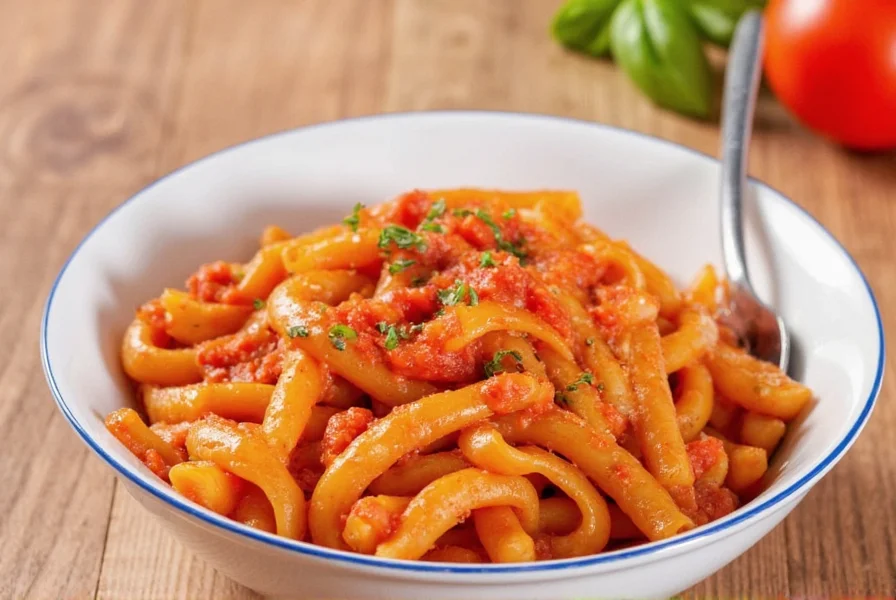Make delicious homemade pasta sauce from fresh tomatoes with this simple recipe. No canned tomatoes needed—just ripe produce and a few key steps for a rich, flavorful sauce that beats store-bought every time.
Ingredients
- 2 lbs (900g) ripe Roma or San Marzano tomatoes
- 3 tbsp extra virgin olive oil
- 1 medium yellow onion, finely chopped
- 4 garlic cloves, minced
- 1 tsp sugar (optional, for balancing acidity)
- 1 tsp dried oregano
- 1 tsp dried basil
- 1/2 tsp red pepper flakes (optional)
- 1 tsp salt (adjust to taste)
- 1/4 tsp black pepper
- 1 tbsp unsalted butter (optional, for richness)
Step-by-Step Instructions
- Prepare tomatoes: Score an 'X' on the bottom of each tomato. Boil water, submerge tomatoes for 30 seconds, then transfer to ice bath. Peel skins off, remove stems, and roughly chop.
- Sauté aromatics: Heat olive oil in a large Dutch oven over medium heat. Add onion and cook until translucent (5 minutes). Add garlic and cook until fragrant (1 minute).
- Cook tomatoes: Add chopped tomatoes, sugar (if using), oregano, basil, red pepper flakes, salt, and pepper. Stir well.
- Simmer: Reduce heat to low. Simmer uncovered for 45-60 minutes, stirring occasionally, until thickened and flavors meld.
- Finish: Remove from heat. For smooth sauce, blend with immersion blender. For chunky, leave as-is. Stir in butter for extra richness (optional).
| Tomato Variety | Flavor Profile | Best For |
|---|---|---|
| Roma | Meaty, mild | Classic red sauces |
| San Marzano | Sweet, low acidity | Pizza & refined sauces |
| Beefsteak | Juicy, bold | Chunky ragùs |
| Cherry | Sweet, intense | Quick pan sauces |
Spice Guide
| Spice/Herb | Flavor Impact | Quantity Recommendation |
|---|---|---|
| Oregano | Earthy, aromatic | 1 tsp dried |
| Basil | Sweet, floral | Add at the end |
| Red Pepper Flakes | Heat + smoky undertones | ½ tsp (adjust to taste) |
| Thyme | Woody, savory | ½ tsp dried |
| Fennel Seeds | Anise-like, subtle licorice | Toasted & crushed, ½ tsp |
FAQs
How long does fresh tomato sauce last in the refrigerator?
Homemade tomato sauce stays fresh for 5-7 days when stored in an airtight container in the refrigerator. Cool completely before storing and use clean utensils to prevent contamination.
Can I freeze fresh tomato sauce for later use?
Yes! Freeze in portion-sized containers or freezer bags (remove air) for up to 6 months. Thaw overnight in the fridge before reheating gently on the stove.
My sauce is too watery—how can I thicken it quickly?
Simmer uncovered for 10-15 minutes to reduce liquid. For faster results, add 1-2 tbsp tomato paste and continue simmering. Avoid flour as it alters flavor.
How much fresh tomato equals one can of tomatoes?
Approximately 2 lbs (900g) of fresh tomatoes yield 1 standard 28-ounce can of crushed tomatoes. Fresh tomatoes have more water, so expect longer simmering time.
Essential Tools
- Large Dutch Oven: Heavy-bottomed pot for even heat distribution while simmering.
- Immersion Blender: Blend sauce directly in the pot for smooth texture without transferring hot liquid.
- Mesh Skimmer: Easily remove tomato skins after blanching.











 浙公网安备
33010002000092号
浙公网安备
33010002000092号 浙B2-20120091-4
浙B2-20120091-4